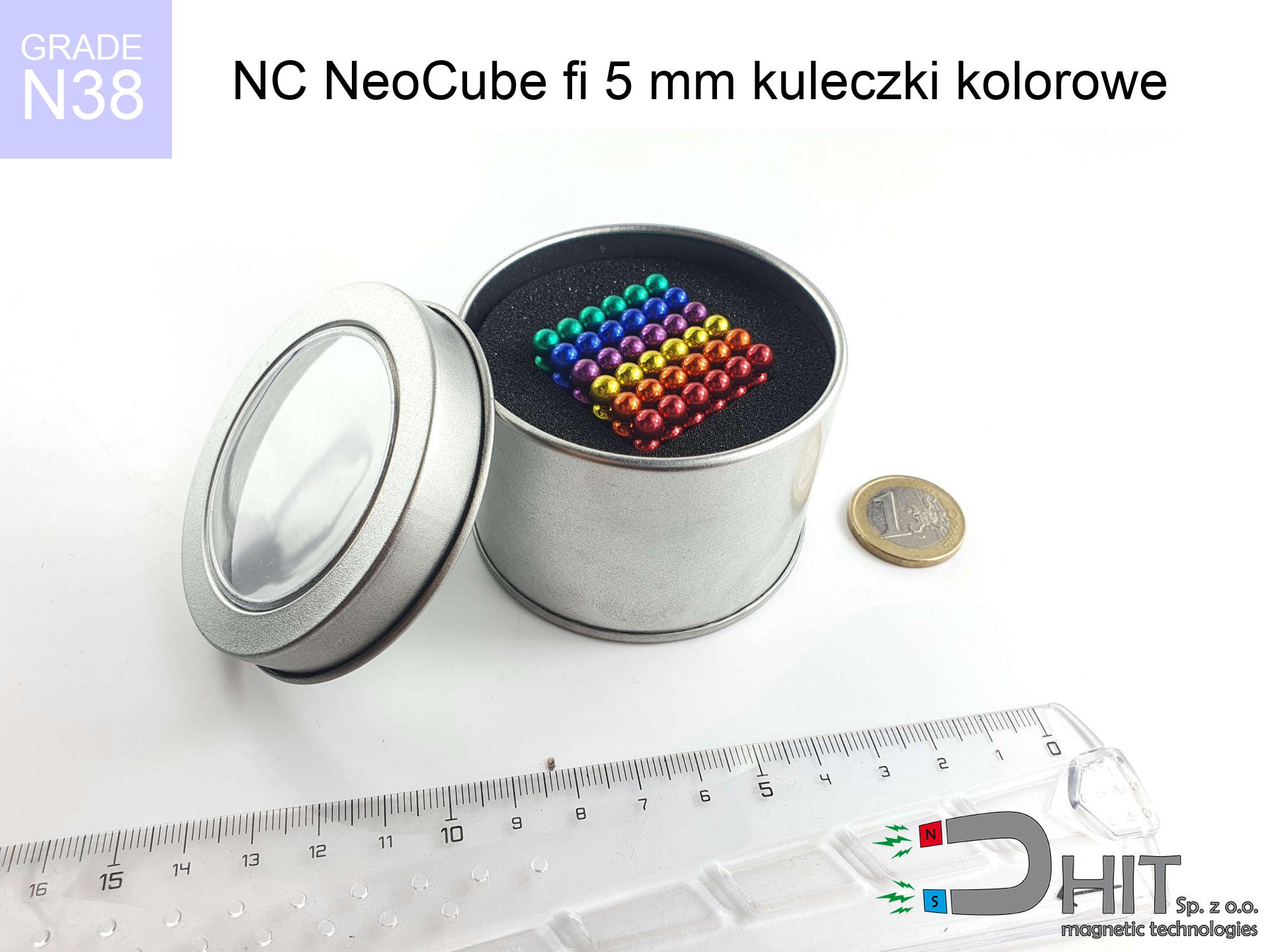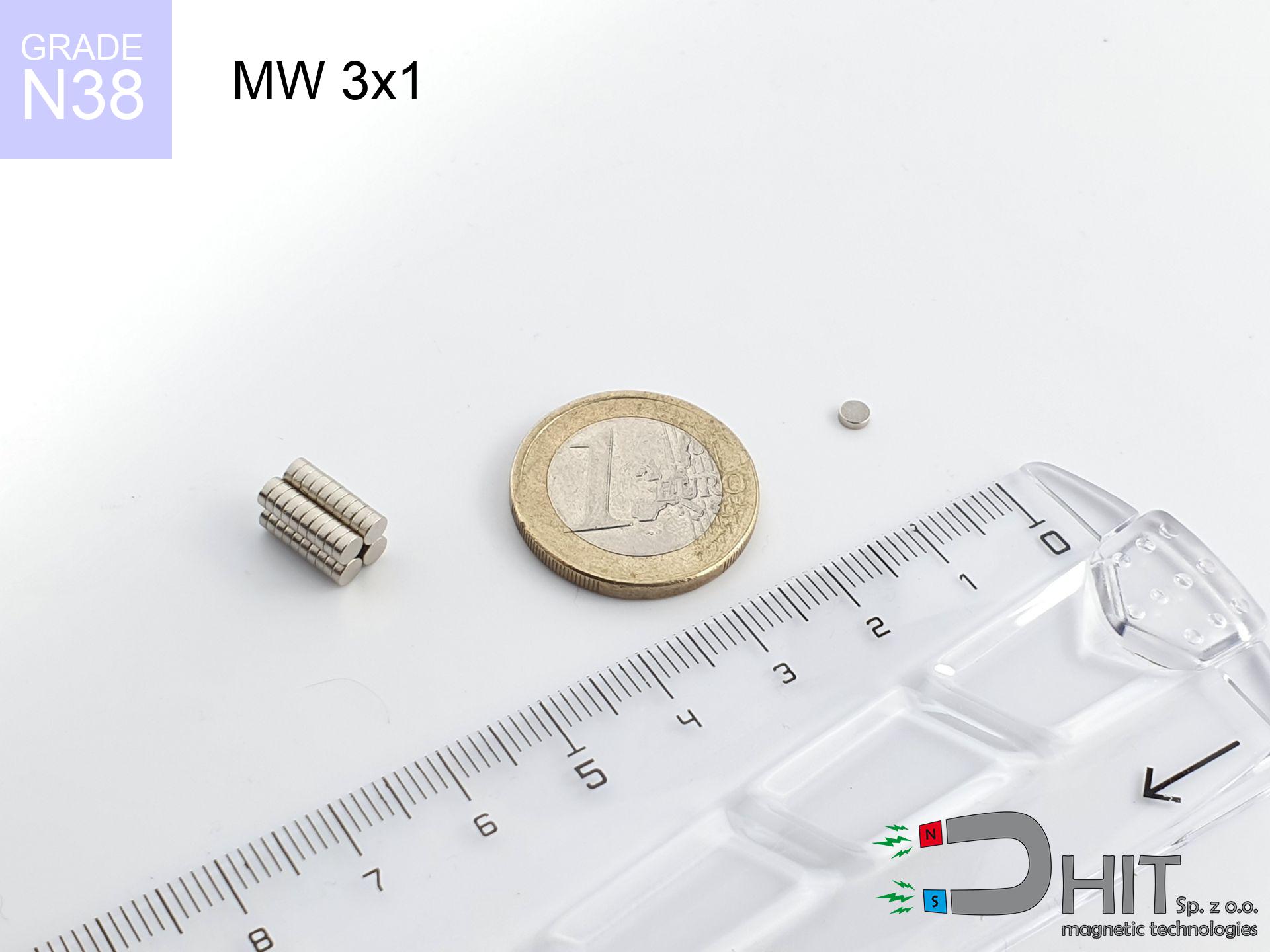MW 6x1 / N38 - neodymium magnet
cylindrical magnet
catalog number 010091
GTIN: 5906301810902
diameter Ø
6
mm [±0,1 mm]
height
1
mm [±0,1 mm]
magnetizing direction
↑ axial
capacity ~
0.33 kg / 3.24 N
magnetic induction ~
195.87 mT / 1,959 Gs
max. temperature
≤ 80
°C
catalog number 010091
GTIN: 5906301810902
diameter Ø
6 mm [±0,1 mm]
height
1 mm [±0,1 mm]
magnetizing direction
↑ axial
capacity ~
0.33 kg / 3.24 N
magnetic induction ~
195.87 mT / 1,959 Gs
max. temperature
≤ 80 °C
0.22 ZŁ gross price (including VAT) / pcs +
0.18 ZŁ net price + 23% VAT / pcs
bulk discounts:
need more quantity?Don't know what to buy?
Give us a call tel: +48 22 499 98 98 or get in touch through form on our website. You can check the power as well as the shape of neodymium magnets in our magnetic mass calculator power calculator
Orders placed by 2:00 PM will be shipped on the same business day.
Specification: cylindrical magnet 6x1 / N38 ↑ axial
Magnetic properties of the material N38
Physical properties of sintered neodymium magnets Nd2Fe14B
Moreover, although neodymium is a component of the strongest magnets, they are prone to corrosion in humid environments. Therefore, they are coated with a coating of epoxy to increase their durability. It's worth noting that NdFeB neodymium magnets are about 13% lighter than SmCo magnets and, despite their power, easily break, which requires care during their handling. Therefore, any mechanical processing should be done before they are magnetized.
In terms of safety, there are many recommendations regarding the use of these magnets. It is advisable to avoid their use in acidic, basic, organic environments or in solvents, as well as in water or oil. Furthermore, they can distort data on magnetic cards and hard drives, although data deletion using a neodymium magnet is not guaranteed.
In terms of properties in different environments, neodymium magnets are sensitive to corrosion, especially in conditions of high humidity. Therefore, they are often covered with thin coatings, such as silver, to preserve them from environmental factors and extend their lifespan. High temperatures exceeding 130°C can result in a loss of their magnetic strength, although there are specific types of neodymium magnets that can withstand temperatures up to 230°C.
As for risks, it is important to avoid using neodymium magnets in acidic conditions, basic conditions, organic or solvent environments, unless they are insulated. Additionally, their use is not recommended in water, oil, or in an environment containing hydrogen, as they may forfeit their magnetic properties.
Compilation of suggested goods
Advantages as well as disadvantages of neodymium magnets NdFeB.
Apart from immense power, neodymium magnets have the following advantages:
- They do not lose their strength (of the magnet). After approximately 10 years, their power decreases by only ~1% (theoretically),
- They protect against demagnetization caused by external magnetic sources extremely well,
- By applying a shiny coating of nickel, gold, or silver, the element gains an aesthetic appearance,
- They exhibit extremely high magnetic induction on the surface of the magnet,
- By using an appropriate combination of materials, they can achieve high thermal resistance, allowing them to operate at temperatures up to 230°C and above...
- Thanks to the flexibility in shaping or the ability to adapt to specific requirements – neodymium magnets can be produced in a wide range of shapes and sizes, which amplifies their universality in usage.
- Wide application in advanced technologically fields – are used in computer drives, electric motors, medical devices or various technologically advanced devices.
Disadvantages of neodymium magnets:
- They can break when subjected to a strong impact. If the magnets are exposed to impacts, we recommend using magnets in a protective case. The steel housing in the form of a holder protects the magnet from impacts, and at the same time increases its overall strength,
- Magnets lose their power due to exposure to high temperatures. In most cases, when the temperature exceeds 80°C, these magnets experience permanent loss in strength (although it is worth noting that this is dependent on the form and size of the magnet). To avoid this problem, we offer special magnets marked with the [AH] symbol, which exhibit high temperature resistance. They can operate even at temperatures as high as 230°C or more,
- They rust in a humid environment. For outdoor use, we recommend using waterproof magnets, such as those made of rubber or plastic,
- Limited ability to create threads or complex shapes in the magnet - the use of a housing is recommended - magnetic holder
- Possible danger to health from tiny fragments of magnets pose a threat, if swallowed, which becomes significant in the context of children's health. It's also worth noting that miniscule components of these magnets are able to be problematic in medical diagnosis in case of swallowing.
Handle Neodymium Magnets Carefully
Neodymium Magnets can attract to each other, pinch the skin, and cause significant swellings.
Neodymium magnets jump and also clash mutually within a radius of several to around 10 cm from each other.
The magnet is coated with nickel. Therefore, exercise caution if you have an allergy.
Studies clearly indicate a small percentage of people who suffer from metal allergies such as nickel. An allergic reaction often manifests as skin redness and rash. If you have a nickel allergy, try wearing gloves or avoid direct contact with nickel-plated neodymium magnets.
Magnets made of neodymium are characterized by their fragility, which can cause them to crumble.
Neodymium magnets are characterized by considerable fragility. Neodymium magnetic are made of metal and coated with a shiny nickel, but they are not as durable as steel. At the moment of collision between the magnets, small metal fragments can be dispersed in different directions.
Comparing neodymium magnets to ferrite magnets (found in speakers), they are 10 times more powerful, and their power can shock you.
Please review the information on how to handle neodymium magnets and avoid significant harm to your body, as well as prevent unintentional disruption to the magnets.
Avoid bringing neodymium magnets close to a phone or GPS.
Magnetic fields interfere with compasses and magnetometers used in navigation for air and sea transport, as well as internal compasses of smartphones and GPS devices.
Neodymium magnets are not recommended for people with pacemakers.
Neodymium magnets generate strong magnetic fields. As a result, they interfere with the operation of a pacemaker. This happens because such devices have a function to deactivate them in a magnetic field.
Neodymium magnets can become demagnetized at high temperatures.
Even though magnets have been observed to maintain their efficacy up to temperatures of 80°C or 175°F, it's essential to consider that this threshold may fluctuate depending on the magnet's type, configuration, and intended usage.
Magnets are not toys, children should not play with them.
Neodymium magnets are not toys. You cannot allow them to become toys for children. In the case of small magnets, they can be swallowed and cause choking. In such cases, the only solution is to undergo surgery to remove the magnets, and otherwise, it can even lead to death.
Dust and powder from neodymium magnets are flammable.
Do not attempt to drill into neodymium magnets. Mechanical processing is also not recommended. Once crushed into fine powder or dust, this material becomes highly flammable.
You should keep neodymium magnets at a safe distance from the wallet, computer, and TV.
The strong magnetic field generated by neodymium magnets can damage magnetic media such as floppy disks, video tapes, HDDs, credit cards, magnetic ID cards, cassette tapes, or other devices. They can also destroy videos, televisions, CRT computer monitors. Remember not to place neodymium magnets close to these electronic devices.
Please see the article - What danger lies in neodymium magnets? You will learn how to handle them properly.




![magnetic holder rubber internal thread 34x8 [M4] GW / N38 magnetic holder rubber internal thread 34x8 [M4] GW / N38](https://cdn3.dhit.pl/graphics/products/umg-34x8-m4-gw-kek.jpg)

![magnetic holder external thread 25x17x8 [M5] GZ / N38 magnetic holder external thread 25x17x8 [M5] GZ / N38](https://cdn3.dhit.pl/graphics/products/um-25x17x8-m5-gz-keb.jpg)

